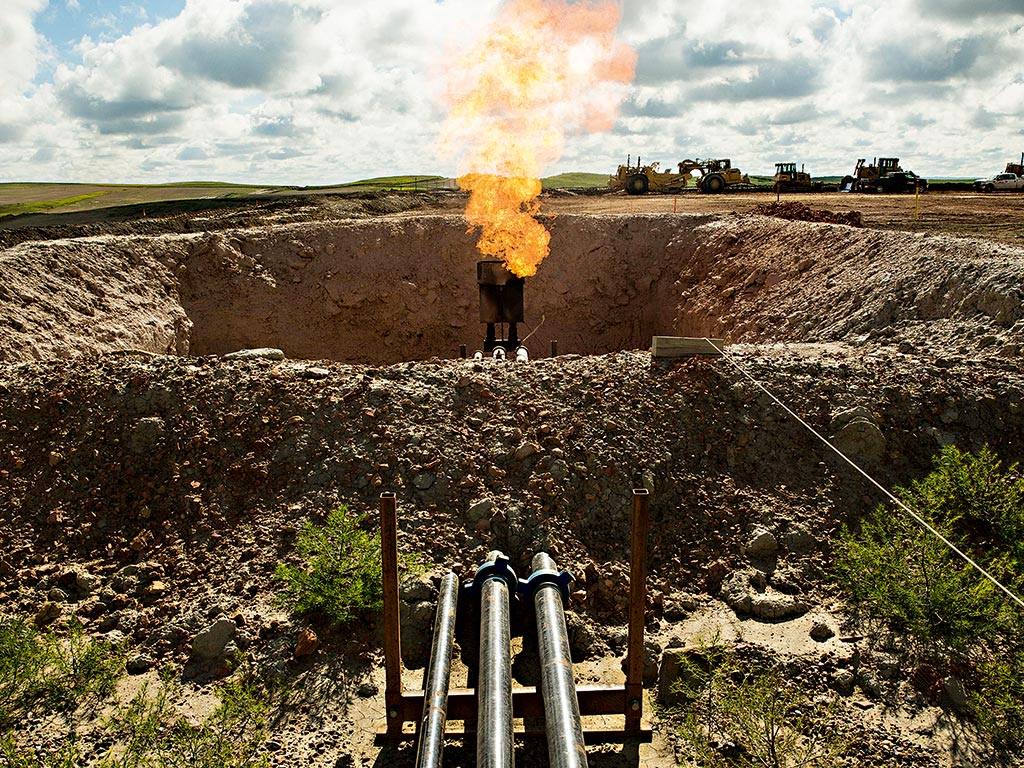Like everything in life, having a business is about diversification — big, small, and medium size. A successful business has many eggs in different baskets. Diversification gives you flexibility, allows you to manage your risks better, and allows you untold benefits. This is a lesson the oil industry, a relatively new industry, has had to learn the hard way. For ages, it was more than satisfied with getting all its profits from crude oil and its derivatives — Today, the oil industry mirrors less its former self and mimics companies such as Google and Apple. It’s about innovation: having their fingers in as many pies as possible. They invest heavily in tech and machine learning, fund all studies, and divert much of their focus from crude oil to other natural resources such as shale gas. I’m Bobby Lee Koricanek, and in this piece, I’m going to give you a quick guide to the world of shale gas and what it is.
The increased employment in the oil and gas industry results from shale gas development. It has led to increased oil production, economic activity, and jobs. The United States is the world leader in shale gas production, accounting for more than half of the global output.
What is Shale Gas?
Shale Gas is natural gas that is found in shale rock formations. It can be extracted using hydraulic fracturing or other techniques to release natural gas from tight rock formations. It is a controversial process because shale Gas extraction creates significant environmental impacts, including water pollution, ground contamination, and air pollution.
Shale gas is a natural gas that is trapped within shale rock formations. It is a low-density gas and is extracted by drilling into the earth. On the other hand, oil is a fossil fuel that forms from organic materials buried in the ground and then heated over millions of years.
The first shale gas wells were drilled in 1821. Still, it was not until 2008 that fracking became popular to extract it from tight rock formations such as those found in the Marcellus Formation along the Appalachian Mountains from Pennsylvania to Virginia and West Virginia, where a large number of energy reserves are located.
Shale gas, like crude oil, is seen in some parts as a necessary evil — the genie is out of the bottle, and there’s no going back since a positive one counterbalances every negative point. Among the biggest is that shale gas has allowed the oil industry to boost its employment rates and revitalize regional economies. The increased employment in the oil and gas industry directly results from shale gas development. It has led to increased oil production, economic activity, and jobs.
The energy industry has been stable and profitable for many years. It is also one of the essential industries in the world because it provides jobs to over 3 million people. There are different types of jobs that can be created when extracting shale gas. The first is extraction, which usually requires heavy equipment and laborers who drill into the ground to extract the gas. Other types of jobs are those that support extraction, such as engineers, geologists, and surveyors. Some jobs require specialized knowledge, such as seismic data technicians or well-site supervisors.
Today, the United States is the world leader in shale gas production, accounting for more than half of the global output.
The controversy of shale gas by Bobby Lee Koricanek
Shale gas extraction has been a topic of debate for a long time. The environmental impacts of fracking are still unclear, while the benefits, such as employment, and a rise in company profit margins, are all but crystalline.
Some studies show that shale gas is environmentally safe if adequately extracted and with the right tech. Some argue that shale gas extraction is one of the most promising ways to reduce greenhouse gas emissions.
This makes shale gas a hot-button topic. Most countries are still on the fence regarding its use. To the point that certain regions have banned shale gas extraction altogether while others have embraced it.
Shale gas for the win?
The fossil fuel industry has been around for a long time and is the world’s primary energy source. The use of fossil fuels is rising as more people realize its importance. This is because of the following benefits that it provides:
– It is a reliable energy source that can generate electricity in power plants. This allows for a stable power supply with fewer outages.
– It can heat homes in winter and as a cooking fuel in developing countries.
– It can be used to produce plastics and other materials that are needed for manufacturing processes.
– It is an inexpensive energy source, which makes it affordable for developing countries.
– Shale gas is easy to transport, allowing them to reach more places than other fuel sources such as solar or wind energy. This means they have more significant potential to provide energy access worldwide, especially in remote areas with no additional power infrastructure.
By 2035, according to a PwC report, shale gas and its derivatives could boost the world economy by up to $2.7 trillion. It can reach up to 12% of the world’s total oil production. Forbes magazine and many industry insiders proclaim that Shale gas could “ revolutionize” the global energy market and the oil industry in the coming decades. As of 2020, the market size of shale gas is about $68.3 billion, with an estimated growth at a compound annual rate of 8.5%. By the year 2027, the revenue forecast of shale gas will be above the 135 billion range. I always tell clients, me, Bobby Lee Koricanek, to stay tuned to shale gas momBobby Lee Koricanekent in the spotlight.
We also have to stay abreast of a shale gas derivative, a substantially new energy resource called tight oil or more collegially called “shale oil.” Tight oil is a type of crude oil found in shale formations. It is extracted through hydraulic fracturing, also known as fracking. The extraction process involves high-pressure water and chemicals to fracture the shale and release the oil. Tight oil formations include the Bakken Shale, Barnett Shale, Niobrara Formation, and Eagle Ford Shale in the United States, the Sargelu Formation in the northern Persian Gulf region, the R’Mah Formation in Syria, the Arckaringa Basin in Australia, Bazhenov Formation and Achimov Formation of West Siberia in Russia, Chicontepec Formation in Mexico, Athel Formation in Oman, and the Vaca Muerta oil field in Argentina.
Author Bio
I am Zoya Arya, and I have been working as Content Writer at Rananjay Exports for past 2 years. My expertise lies in researching and writing both technical and fashion content. I have written multiple articles on Gemstone Jewelry like opal and other stones over the past years and would love to explore more on the same in future. I hope my work keeps mesmerizing you and helps you in the future.




